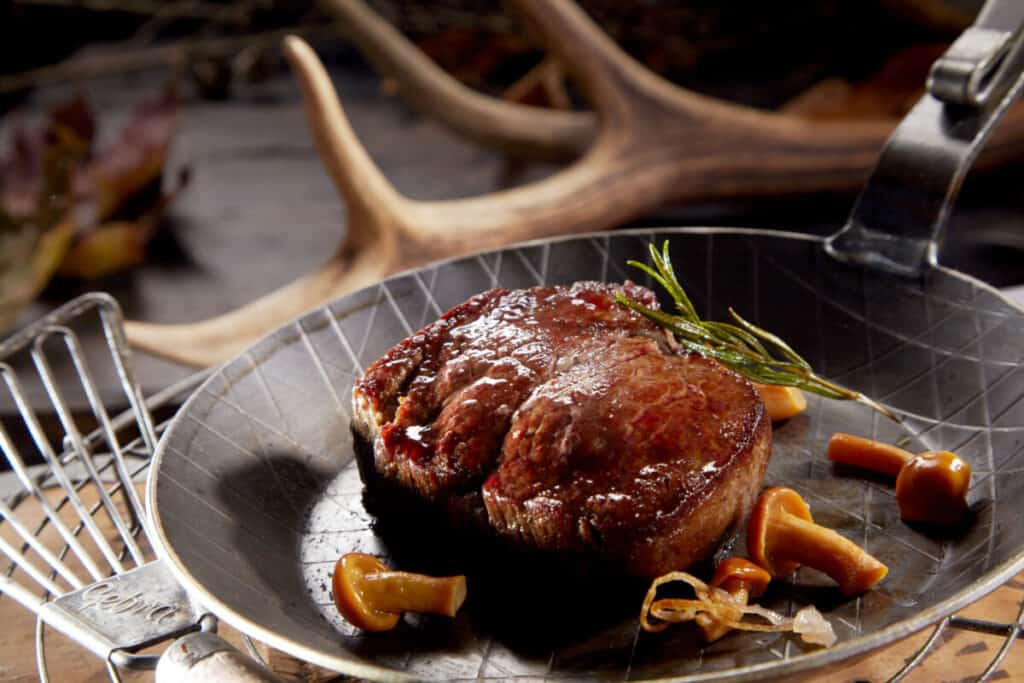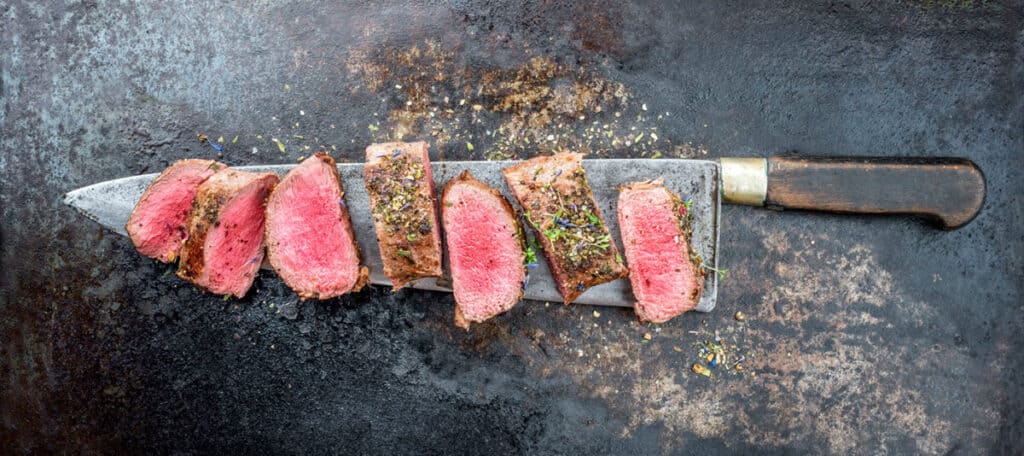What Animals Hunters Do and Don’t Eat: A complete guide

If you have never hunted before, it can be difficult to understand why hunters eat some animals, and don’t eat other animals, and why hunters kill some animals even if they will be left to waste. As a long-time hunter myself, learning this information helped me to see how I can better take care of the environment.
Hunters almost always eat the animals they kill, and in most jurisdictions, it is the law that hunters not waste any of the meat. However, there are some species that are culled and not eaten because of food safety or other practical concerns.
But there’s a lot to understand about this question. In addition to seeing the lists below, please read about each section to understand why some animals are used in different ways.
Animals That Hunters Always Eat After Killing
As you can see from the list below, most all of the commonly hunted animals around the world, and certainly in North America, are eaten after they are hunted. Hunters enjoy the organic, unaltered meat they get from hunting big game animals, and the meat is generally considered to be quite good.
- Deer
- Elk
- Moose
- Antelope
- Caribou
- Red stag
- Bison
- Big-horned sheep (most sheep)
- Mountain goat (most goats)
- Ducks
- Geese
- Pheasant
- Turkey
- Grouse
- Chukar
- Ptarmigan
- Oryx
- Elephant
- Giraffe
- Zebra
- Eland
- Kudu
- Wildebeest
- Almost all other African plains game
Do hunters really eat the meat from the elephants they hunt? Hunters always eat the meat from elephants that are hunted. It is generally considered quite tasty, healthy, and in high demand on the meat market in Africa. It takes a significant team of people to butcher an elephant properly because of its size. This video shows a timelapse of the process.
As will be discussed later in this article, there are even laws in place to ensure that the meat from all of these animals is never wasted. If a hunter were to foolishly waste the meat of any of these game after killing them, they could be prosecuted.
The amount of meat that hunters are able to get from a big game animal differs drastically on the type of animal hunted, its age, and how fat the animal is. The table below provides a general look at the meat a hunter would get from killing several different types of game.
| Animal | Approximate Animal Weight | Meat Yield |
| Mule Deer Buck | 200 pounds | 65 pounds |
| Whitetail Deer Buck | 150 pounds | 53 pounds |
| Bull Elk | 700 pounds | 200 pounds |
| Bull Moose | 1250 pounds | 425 pounds |
| Bison | 1150 pounds | 600 pounds |
| Whitetail Deer Doe | 100 pounds | 40 pounds |
| Mule Deer Doe | 165 pounds | 57 pounds |
| African Forest Elephant | 5500 pounds | 1,000 pounds |
| Cow Elk | 500 pounds | 155 pounds |
Obviously, the examples in the table above are just that–examples. Sometimes an animal can get shot straight through the shoulders and more meat can be lost, or a hunter could not be able to remove much of the neck or rib meat if they aren’t as skilled at field dressing game.
While all of the animals on this list are eaten by hunters, they vary greatly in the quality or taste of the meat depending on what the animal has frequently fed on, how well the meat is cared for in the field, and the cooking of the meat. I have eaten mule deer that tasted dry and incredibly gamey, and I have also had mule deer meat that tasted delicious and very similar to beef.
Hunters often avoid particular types of game that do not taste good to them. For example, I personally don’t like the taste of wild duck at all, so I do not hunt them. Other people love the taste of duck.
When traveling to hunt, game meat often has to be left at the destination. For example, when I hunt plains game in Africa, laws prevent me from importing the meat into the United States. Instead, the meat is used to feed the local people in the village area that supports the ranch where I hunt. The professional hunters, their families, and many other families are supported by the meat that hunters harvest. The game are only taken in proper numbers to ensure the source of food will remain viable for those families.
Animals That Hunters Usually Eat After Killing

Unlike the first category of animals that hunters always eat, the animals in this category are sometimes eaten and other times left. The reason that some hunters don’t eat the meat when others do, is primarily a question of the circumstances surrounding the hunt.
Also, all of the animals in this section are, in some locations and at some times, considered to be overpopulated. Thus, conservationists and fish and game commissions sometimes want the animals to be killed in larger numbers to maintain the health of the ecosystem.
- Aoudad (Barbary sheep)
- Feral Hogs
- Pigeon
- Black bear
- Grizzly bear
- Alligator
Why don’t hunters always eat bear meat? Most hunters eat the meat from the bears they hunt, but some avoid it due to meat safety concerns. Bear meat often contains the larvae of a dangerous parasite which can cause trichinosis in humans if not fully cooked. State hunting laws differ on requirements for hunters to preserve bear meat.
If a bear is hunted in Alaska after feeding heavily on salmon, that meat can taste extremely bad, as the fishy flavor of the salmon diet is mixed with the dark flavor of bear meat. In fact, hunters of of black bears in Alaska must keep the meat before June 1, but after June 1 each year, the meat is not required to be harvested. Most hunters prefer the taste of bear meat in the Spring compared to bear meat in the Fall.
Do people really eat alligator meat? Alligator meat is generally considered to be quite tasty, healthy, and easy to prepare. The tail and jowls are the choicest meats, but all meat is usually eaten. Florida laws allow hunters to sell alligator meat, creating a significant market for the delicacy.
Why don’t hunters always eat aoudad (barbary sheep)? In general, aoudad sheep don’t taste good unless prepared extremely well. Younger ewes taste better than old rams, but most hunters consider it only suitable for jerky. Many states, such as Texas, don’t require hunters to keep the meat from aoudad.
Do hunters eat feral hogs after hunting them? Feral hog meat is generally healthy and delicious, so many hunters enjoy eating it; however, hogs cause tremendous damage in many areas of the United States, and to more effectively limit their numbers, hunters sometimes leave them out of concern for time.
Animals That Hunters Rarely Eat After Killing
Most hunters do not want to hunt game and leave the meat. In fact, every hunter I’ve ever met feels a sense of duty to the animal to use it to the fullest. Contrary to popular belief, most hunters care deeply about wildlife and conservation, but believe that humans can participating in the circle of life just as we have for thousands of years without killing off any species as long as numbers are managed.
All of the animals in this list are here because they are predators. The issue with eating the meat of predators is they often contain bacteria and larvae which can cause disease in humans. Thus, these animals are generally not eaten. Also, the animals on this list are considered to be poor table fare.
- Coyote
- Wolf
- Lynx
- Bobcat
- Mountain lion
- Crow
- Muskrat
- Raccoon
- Baboon
Why don’t hunters usually eat mountain lion? Mountain lion meat is generally considered to be inedible because of its poor taste, and because it often contains larvae which can cause trichinosis in humans if not fully cooked. However, some hunters do eat the meat and claim it tastes like pork. The folks over at Hush ate mountain lion meat in 2016 and reported that it tasted quite good.
Why don’t hunters normally eat wolf meat? Generally, hunters do not eat wolf meat because it usually contains dangerous bacteria and larvae that can cause trichinosis and other diseases in humans. Although some hunters do eat the meat after fully cooking, most hunters kill wolves to control populations, rather than for meat.
Why don’t hunters usually eat coyote meat? In general, hunters do not eat coyote meat. It is not considered good tasting and frequently contains bacteria which can be dangerous to humans. However, some hunters have tried eating coyote with mixed reports as to its tastiness. Steven Rinella ate coyote and reported it tasted good on camera, but later on Joe Rogan’s podcast said it terrible. The Bearded Woodsman tried coyote and reported it tasted like dark turkey meat.
“Waste of Game” Laws in the United States

Wanton waste of game laws are in place in all 50 U.S. states and many other countries, and prevent hunters from killing big game animals and not properly caring for and using the meat. While all states have waste of game laws, they differ in (1) what species they require to protect the meat, and in (2) what specific cuts of meat are required to be preserved.
First, let’s look at example state statute, and from what game they require meat preservation.
As an example, Idaho’s waste of game law provides “Hunters are required to remove and care for the edible meat of big game animals, except black bears, mountain lions and gray wolves.” Source: Idaho Fish and Game Big Game Hunting Seasons and Rules, Page 97. The reason these specific animals are selected are because of meat safety, as discussed previously.
The law not only requires what game animals are protected–requiring hunters to keep the meat, but the statutes are extremely specific in defining what cuts of meat must be kept.
“This includes the meat from hind quarters as far down as the hock, meat of the front quarters as far down as the knee and meat along the backbone which is the loin and tenderloin. It does not include meat of the head or neck, meat covering or between the ribs, internal organs, or meat on the bones after close trimming.” Source: Idaho Fish and Game Big Game Hunting Seasons and Rules, Page 97.
Idaho’s law is less strict than Alaska, for example, which requires hunters to cut out all rib meat, and to go further up the neck to gather more meat. Other states are less strict than Idaho, not requiring hunters to get the tenderloins, as they can be difficult to remove if using the popular “gutless” method of field dressing the game.
